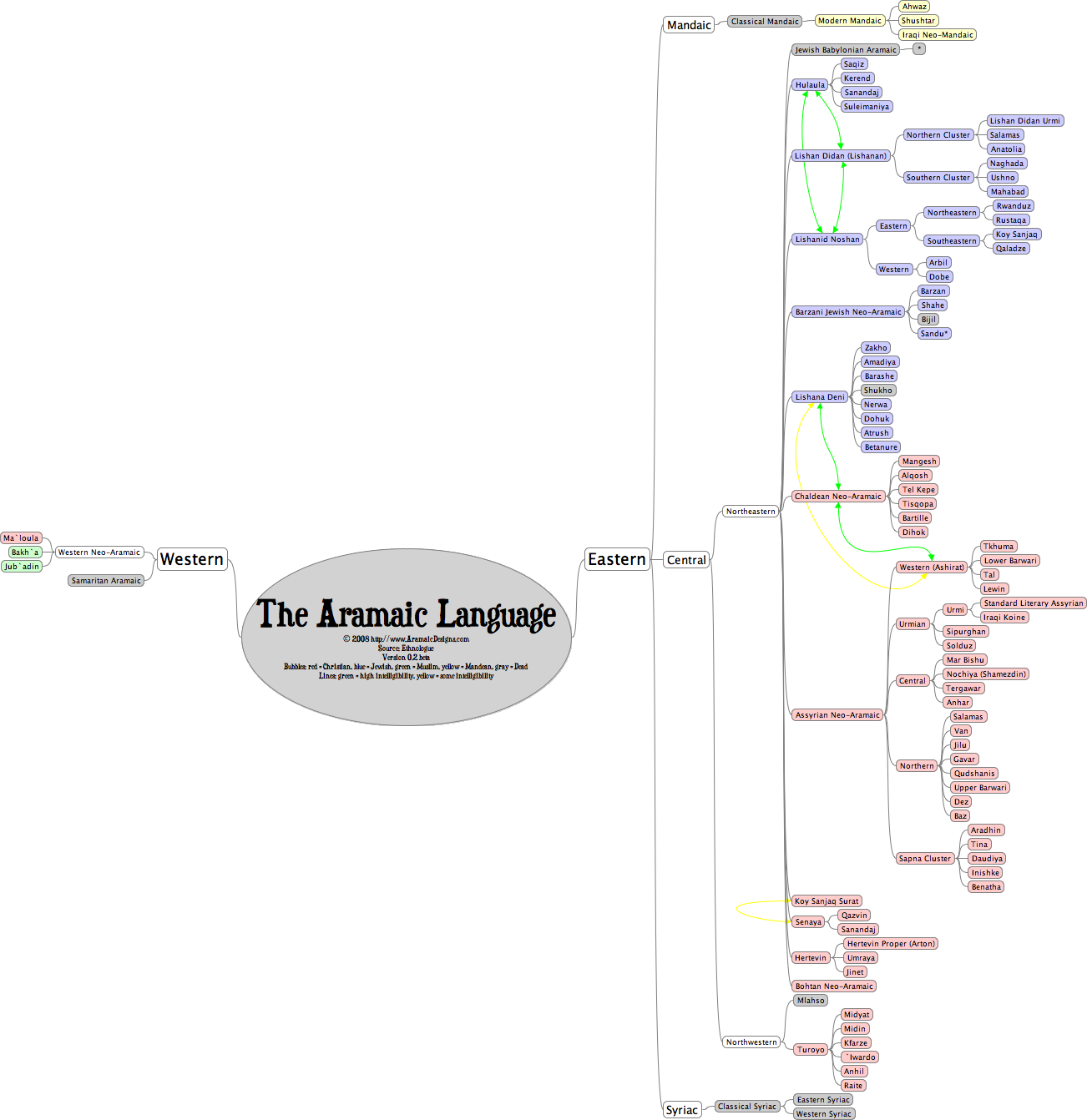

"The author and publisher specifically disclaim any responsibility for any liability, loss or risk, personal or otherwise, which in incurred as a consequence, directly or indirectly of the use and application of any of the contents of this e-book. It is the buyer's sole responsibility to verify that the translation meets his or her requirements."
| Word | Old Aramaic Script | "Hebrew" Script | Syriac Script | Notes |
| "Love" | not attested | attested* | common | In Old Aramaic and in most dialects written in Hebrew script, this could be confused for "sin" or "debt" as it is a homograph. Depending on context, a different inflection of the root chosen would have been more appropriate, or a proper, documented noun-form from the root rḥm instead. |
| "Truth" | not attested | rare | common | |
| "Health" | not attested | not attested | common | |
| "Joy" | not attested | not attested | common | The Lexicon Syriacum (2nd ed) defines this form primarily as "suavity, jocundity." Ḥadutha would have been more appropriate for all scripts. |
| "Freedom" | not attested | not attested | common | This is a Syriac and Christian Palestinian Aramaic ("CPA") spelling. All other dialects use a yod instead of alef. |
| "Flame" | not attested | not attested | common | This is another Syriac and CPA spelling and a specialized term. Nura or "Fire" would have worked better here for all scripts. |
| "Life" | not attested | rare | rare | This is a rare and unusual form for 'life'. Ḥaye is best in Syriac, where ḥaya or ḥayyin is best for the other two. |
| "Gem" | not attested | rare | common* | This word generally means "pearl" not "gem." (Lec. Syr.) |
| "Light" | common* | common* | common | In Old Aramaic and Hebrew Scripts it's usually nhora. |
| "Paradise" | not attested | not attested | rare | |
| "Dance" | not attested* | not attested* | common | As a noun it is only attested in Syriac, but it is possible that this could appear in other forms. |
| "Beauty" | not attested but certainly possible | common* | common* | Can be confused for "Shofar." A less-ambiguous alternative could have been shapira/tha ("beautiful") or perhaps even ziwa ("splendor / beauty"). |
| "Heaven" | rare* | common | common | In Old Aramaic, was much more common as shmayin. |
| "Dawn / Twilight" | not attested | not attested | very rare | A vastly more common form would be nogha for Old Aramaic and Hebrew and nugha for Syriac. |
| "Sunrise" | not attested | not attested | common | A Syriac form that means "shining" more than "sunrise." Again nogha / nugha would have been a better choice. |
| "Resur-rection" | not attested | not attested | common | |
| "Grace / Goodness" | common | common | common | Simple typesetting error; the font for Old Aramaic is not rendered properly. |
| "Music" | ? | ? | ? | I could not find this noun form attested anywhere, although I could imagine it being used (zmara with -utha suffixed to denote an expanded domain, like the difference between malka "king" and malkutha "kingdom"); however, it would have been better to simply use zmara ("song") which is very commonly attested. |
1) My primary goal is to ensure that individuals who have purchased this eBook do not tattoo upon them anything that is not what they expect. As my blog here has documented over the past 3-4 years, mistakes when it comes to Aramaic tattoos are rampant, and most of that, in my professional opinion, is due to individuals not researching well enough to understand the depth of the language.
2) At this point, I sincerely hope in all good faith that the owner of My-Aramaic-Tattoo.com takes this opportunity to edit their mistakes and make their product better and more suitable towards its intended purpose.

Labels: aramaic, aramaic tattoo, bad aramaic, news, tattoo, tattoo ebook